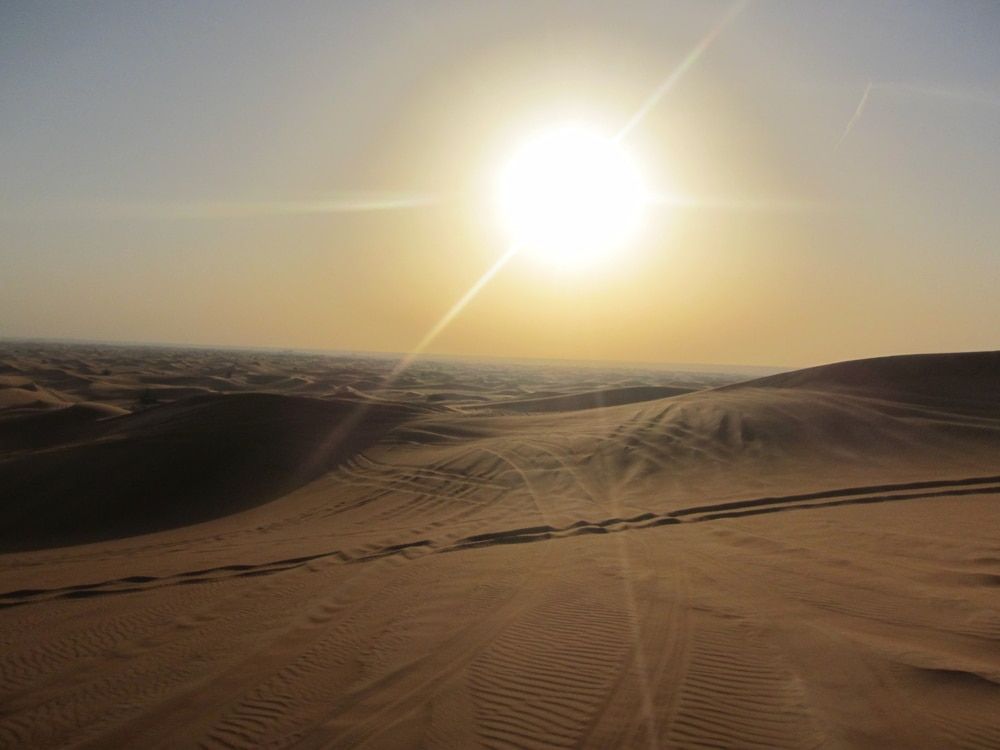A Yemeni rebel claim highlights the risk of nuclear power in the Middle East
By Ali Ahmad | December 8, 2017

Earlier this week, Yemen’s Houthi rebel group claimed it had launched a missile at the Barakah nuclear power plant in the western region of Abu Dhabi, in retaliation for the Saudi-led blockade imposed on Yemen. Abu Dhabi is part of the United Arab Emirates (UAE), a member of the coalition that has been targeting the Houthis.
UAE officials immediately denied that the attack had taken place, and the Houthis have not provided any evidence to support their claim. However, regardless of the claim’s validity, and despite the lack of evidence, the incident is emblematic of the dangers of nuclear power in the Middle East. The UAE should take it very seriously. Even if this “attack” was merely a propaganda ploy, nuclear power facilities will always be potential targets for enemy states and non-state actors, including terrorist groups. In the Middle East, in particular, there is a history of attacks on nuclear sites during regional conflicts.
The Barakah plant, being built by the Korea Electrical Power Corporation at an estimated cost of $20 billion, will be the UAE’s first nuclear power facility. The behemoth plant, with four 1,400-megawatt reactors and a total capacity of 5,600 megawatts, is the world’s largest single nuclear construction project. Once completed, it is projected to contribute about 25 percent of the UAE’s energy. The first reactor is expected to be online next year and the rest by 2020.
The UAE’s nuclear power program has been widely applauded as an intelligent investment that will help the country achieve energy security by reducing its reliance on imported natural gas. The UAE relies on natural gas not only to supply its population’s growing demand for electricity, but also to power the desalination plants that provide the majority of the country’s potable water. Officials have also touted the potential for the shift to nuclear power to reduce carbon dioxide emissions.
But the rosy projections about nuclear power’s benefits gloss over the major security vulnerability the plant will create.
The fact that the population of the UAE and other Gulf countries is concentrated in some major urban centers exacerbates this vulnerability. At Fukushima, the site of Japan’s infamous 2011 nuclear disaster, the population living on the coast near the plant could be evacuated inland. In contrast, evacuation from the UAE coast would be difficult, and there are few suitable sites to which the coastal population could be removed in the event of a disaster.
In an interview with the Telegraph, Japan’s Prime Minister at the time of the Fukushima disaster revealed that his government came within a “paper-thin-margin” of deciding to evacuate Tokyo and its 50 million people. The distance between Fukushima and Tokyo is comparable to the distance between Al-Barakah and Abu Dhabi, the nearest major city on the Gulf coast.
The country’s National Emergency Crisis and Disaster Management Authority has said that “the UAE’s air defense system is capable of dealing with any threats.” But downplaying the vulnerability of the site and the security risks of nuclear power could prove to be very costly. Nuclear power plants are natural targets in armed conflicts, particularly with the emergence of non-state actors such as Yemen’s Houthis.
After 9/11, the United States’ security apparatus went on high alert over the possibility of a terrorist attack on one of the nation’s nuclear reactors. Al Qaeda training materials found in Afghanistan reportedly contained diagrams of American nuclear power plants. In February 2002, the US Nuclear Regulatory Commission issued an advisory to the nation’s 103 nuclear power plants warning that terrorists might attempt a 9/11-style attack on some of them by flying hijacked planes into the reactors. Security officials also warned of potential attacks via boat or truck bombs, ground assaults by commando teams, and the possibility of sabotage by insiders. Such attacks could target not only the reactors themselves, but also the spent fuel pools where radioactive waste is stored.
The issue of security is one of the reasons Israel has refrained from building nuclear power plants on its territory, although it has two small reactors, ostensibly for research. There is reason for caution, as the Middle East has a history of attacks on nuclear facilities, including one launched by Israel itself: In 1980, Iran bombed the under-construction Osirak nuclear reactor in Iraq but failed to destroy it; a year later, an attack by the Israeli air force succeeded in reducing the reactor to rubble. Likewise, Iraq repeatedly bombed the partially-completed Bushehr nuclear plant in Iran during the Iran-Iraq War in the 1980s.
Because these reactors were still under construction, the attacks did not lead to a release of radiation, but there have also been attacks on Israel’s Dimona reactor in the southern Negev desert. In 1991, Iraq fired Scud missiles at the reactor, but missed the target. Today, the facility is in missile range from Iran, Syria, and Hezbollah in Lebanon. Although the site is heavily protected, in 2012 the Israel Atomic Energy Commission announced that the reactor would be shut down should war break out, to minimize danger from attacks.
Given this history, and the potentially catastrophic consequences of a successful attack on a nuclear facility, the UAE and other Middle Eastern countries should seriously consider the risks when deciding whether to pursue their own forays into nuclear power.
Together, we make the world safer.
The Bulletin elevates expert voices above the noise. But as an independent nonprofit organization, our operations depend on the support of readers like you. Help us continue to deliver quality journalism that holds leaders accountable. Your support of our work at any level is important. In return, we promise our coverage will be understandable, influential, vigilant, solution-oriented, and fair-minded. Together we can make a difference.
Topics: Nuclear Energy, Opinion














